In recent years, many gardeners have relaxed their approach to weed control. Natural gardens, wild patches and meadow-like planting have ushered in a more carefree approach to weeding. This positive change is rooted in environmentalism, with an awareness that we, as gardeners, have a part to play in caring for the soil, the wider ecosystem and the wildlife where we live.
However, as a gardener myself, I know that there are certain weeds you do not want growing in your flower beds or vegetable garden. While using inorganic chemicals to remove weeds is not recommended, there are effective methods that can help you clear nettles, brambles and dandelions, and fall is a good time to get organized and on top of your weeding for next year.
So, if you are wondering how to kill weeds in the fall, our guide has all the information you need for targeting problem plants before they settle in for the winter months and return in the spring. Here, I share tips and tricks for clearing perennial and annual weeds, and lessons I have learned from working in private and public gardens across the UK.
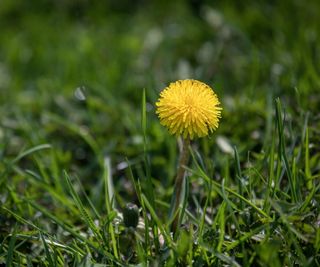
(Image credit: Getty Images/Ali Majdfar)
How to kill weeds in the fall
When considering how to get rid of weeds, employing natural methods is far preferable to using chemicals. Whether you have chickweed spreading across your borders or clover growing through gravel pathways, there are weed control methods that are particularly effective in the fall months that need not impact your wildlife garden ideas. So, get a jump start on weeding for next year by following our simple guide and learning how to kill weeds in the fall.
Manually removing weeds
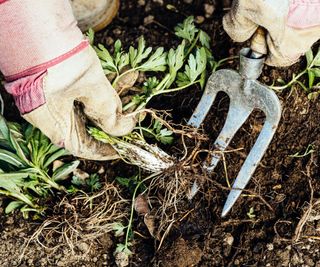
(Image credit: Getty/lucentius)
Manually removing weeds, while time-consuming, is perhaps the most effective way to eliminate unwelcome plants from your plot. For many gardeners, this age-old approach to weed control cannot be bested, considered as mindful gardening. So, if you want to get some fresh air and as much vitamin D as possible during fall, spending 15 minutes a day hand weeding in your yard can help.
While the climate will vary depending on where you live and your US hardiness zone, most of us typically experience mild temperatures and plenty of rain during the fall months, creating ideal conditions for annual weeds to germinate rapidly. Over October and November, you will see young seedlings emerging across beds and borders.
In terms of essential gardening tools, using a garden hoe can be useful for annual weeds, such as henbit, deadnettle, and chickweed, most of which have shallow root systems. Simply loosen the soil with a hoe, and then pick out the weeds. Just be sure you are not removing any foxglove, aquilegia or other biennial seedlings that you want to keep.
In terms of perennial weeds, a little more precision and care will be needed when handling nettles, brambles and dandelions. Perennial weeds will have extensive root or rhizome networks, all of which must be removed if you want to fully eradicate problem plants from your yard.
For example, nettles have networks of rhizomes growing horizontally, appearing like a tangled underground web that enables this weed to spring up in many different locations. Bramble, plantain, dock leaf and dandelion plants all have deep tap roots. This clever evolutionary adaptation can make it very tricky to get rid of these weeds, but patience and care are your secret weapon.
For larger perennial weed clumps, use a fork to loosen the soil around the crown, being careful not to slice into the roots. I find it is best to do this on wet days, as damp soil can help to make the job of pulling up entire roots far easier (and more satisfying). I once spent an entire day pulling up dock leaves in a field when working as a gardener in Wales. The wet soil helped to make this job 100 times easier.
For smaller clumps, follow the same method as above but instead use a hand fork or a hori hori knife, which should allow you to carefully wiggle the weed out of the soil.
As any gardener will tell you, manually removing weeds is a long game to play. While you won’t get rid of every weed, regularly weeding can help to keep unwelcome plants at bay.
One final job to add to your fall gardening checklist is mulching, which can be done once you have finished weeding ahead of the winter cold.
‘After you have finished weeding in the fall, usually around October or November, simply add a two-inch layer of mulch, such as straw or shredded leaves, around the base of perennials and shrubs,’ says Reese Robbins, garden expert and creator of Just Pure Gardening. ‘This layer insulates the roots against sudden temperature drops, helps retain soil moisture, and reduces weed growth over winter.’ Pine straw mulch is available to order online from Walmart.
If you have a severe weed problem in your yard, however, there are other options to consider.
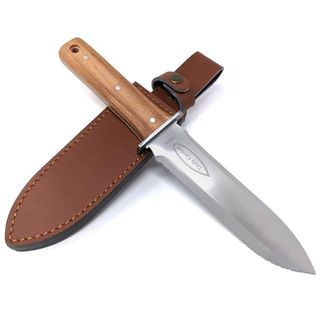
This hori hori knife is perfectly designed for weeding in garden beds and borders. Be sure to keep the blade sharp for maximum effect.

We all need gardening gloves, particularly when handling sharp, spiky or toxic weeds. These yellow gloves combine style with practicality.
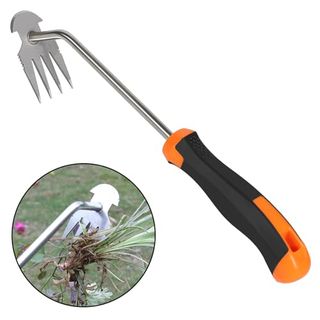
This weeding tool is ideal for removing crabgrass and nettles out of your yard. With an anti-rust steel finish, this tool will last many years in your shed.

Reese L. Robbins is the founder of Just Pure Gardening, a site full of fruit and vegetable growing guides, garden ideas, and garden product reviews.
Using organic sprays to get rid of weeds
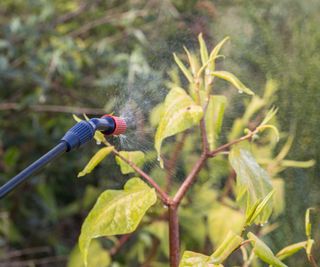
(Image credit: Henfaes / iStock / Getty Images Plus / Getty Images)
In the fall months, perennial weeds are storing nutrients to prepare for winter dormancy. They then use this energy to reshoot in the spring, so taking the time to eradicate them in the fall can prevent this. While I would always suggest manually weeding is your first and best option, I know that sometimes this can be an impossible task.
So, if you are overcome with perennial broadleaf weeds, including nettles and dandelions, using an organic herbicide spray is one option to consider. While this should be a last resort, limited and targeted applications can help to control a weed problem that is spiraling out of control.
Perennial weeds are troublesome because of their extensive root networks, as mentioned above, and any missed section of root that is left behind will regrow. For example, if you are wondering how to remove weeds from pavers, such as dandelions growing among cobblestones at the front of your home, using a small amount of organic herbicide can help, as it will be nigh on impossible to excavate all of the root between small cracks.
Perennial weeds are best eliminated with iron-based sprays, which can kill broadleaf varieties without damaging grass, making this a good option if your lawn area is overcome with weeds. Organic iron-based weed killers are available from Amazon.
Do not apply any herbicide or weed killer when it is wet or windy, as there is always a risk that the solution can wash off and damage nearby perennials or shrubs in your borders. Always select a still, dry day, and apply small amounts. Remember that weedkillers, even if they are organic, can impact biodiversity, so use them sensibly and sparingly.
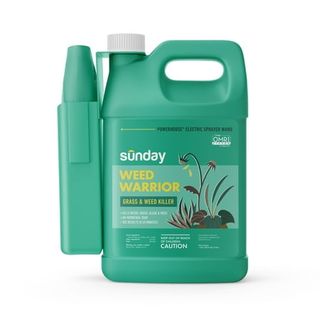
This organic weed killer comes with a handy spraying wand for easy, extensive coverage around your yard. This fast-acting formula can work in under 20 minutes.
Alternative solutions for killing weeds
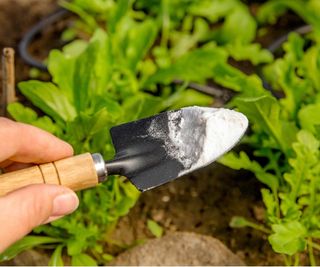
(Image credit: Helin Loik-Tomson via Getty Images)
There are hundreds of alternative methods that you can try in the fall months, including using vinegar or baking soda to kill weeds. While there is no unanimous verdict on the viability of alternative methods, you might find one recipe or approach that works for you.
‘Some natural methods can help to reduce and limit the spread of weeds,’ says Drew Swainston, former professional gardener and gardens content editor at Homes & Gardens. ‘However, in reality, using your hands to dig, fork and lift weeds seems to be the best approach, particularly if you are conscious to keep chemicals out of your yard.’
For large areas of ground that are full of perennial and annual weeds, consider covering them with cardboard and covering this with mulch. ‘Covering soil can hinder new weed growth,’ Drew adds, ‘and while you have to be patient and avoid planting here for six months or longer, this method can help to clear large areas of weeds.’
Finally, if you are dealing with weeds in gravel, why not use a weed flame torch, available to order from Walmart? In my experience, burning weeds that have deep tap roots will not stop them from regrowing, but repeated burning can eventually do the job.

Drew qualified as a journalist and wrote for many websites and publications, before studying for a horticulture qualification. He worked as a professional gardener for several years, specializing in kitchen gardening. He’s now bringing his expertise and passion to Homes & Gardens as a member of our team.
FAQs
Are weeds good for pollinators?
Yes, there are many flowering weeds for pollinators that are beneficial if you are looking to boost biodiversity in your yard. Dandelions and clovers are known to be popular with butterflies and bees, so leaving a small wild patch in your yard is a good idea. Why not leave plants to grow and self-seed towards the end of your yard?
If you are worried about weeds, bare soil should be avoided. This is only an opportunity for weed seeds to germinate and dominate. My advice: fill your borders and beds with ground cover plants to stop weeds, such as monkey grass or Japanese spurge, or for a native option, why not learn how to grow wild ginger? These plants, once established, will outcompete any opportunistic weeds.
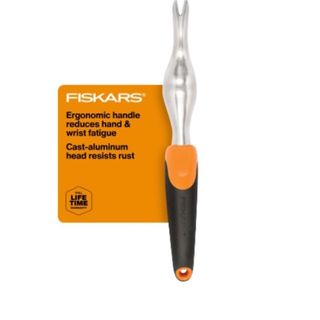
This handy Fiskars garden weeder will help to lift invasive weeds out of your borders by removing the root as well as the weed foliage.
In recent years, many gardeners have adopted a more relaxed approach to weed control. Natural gardens, wild patches, and meadow-like planting have ushered in a more carefree attitude towards weeding. This positive change is rooted in environmentalism, with an understanding that gardeners play a role in caring for the soil, the wider ecosystem, and the wildlife in their surroundings.
However, there are certain weeds that you do not want growing in your flower beds or vegetable garden. While using inorganic chemicals is not recommended, there are effective methods to clear nettles, brambles, and dandelions. Fall is a good time to get organized and tackle your weeding for the upcoming year.
If you’re wondering how to effectively deal with weeds in the fall, our guide provides all the information you need to target problematic plants before they establish themselves for the winter and return in the spring. Here, you’ll find tips and tricks for clearing both perennial and annual weeds, based on lessons learned from working in gardens across the UK.

(Image credit: Getty Images/Ali Majdfar)
How to kill weeds in the fall
When it comes to weed removal, using natural methods is much preferred over chemicals. Whether you’re dealing with chickweed in your borders or clover in your pathways, there are weed control techniques that are particularly effective during the fall months without impacting your wildlife garden. Get a head start on weeding for the next year by following our simple guide on how to tackle weeds in the fall.
Manually removing weeds

(Image credit: Getty/lucentius)
Manually removing weeds, though time-consuming, is one of the most effective ways to get rid of unwanted plants in your garden. Many gardeners find this traditional approach to weed control to be the most mindful. Spending 15 minutes a day hand weeding in your yard can help you get some fresh air and vitamin D during the fall.
During the fall months, mild temperatures and plenty of rain create ideal conditions for rapid germination of annual weeds. Young seedlings will start to emerge across beds and borders in October and November. A garden hoe can be useful for annual weeds with shallow root systems like henbit, deadnettle, and chickweed. Loosen the soil with a hoe and then pick out the weeds. Be careful not to remove any desirable seedlings like foxglove or aquilegia.
Dealing with perennial weeds like nettles, brambles, and dandelions requires more precision and care. These weeds have extensive root systems or rhizomes that must be completely removed to eradicate them. Nettles, for example, have rhizomes that grow horizontally, creating a network that allows them to pop up in various locations. Brambles, plantain, dock leaf, and dandelion plants have deep tap roots, making them challenging to eliminate. Patience and care are key.
For larger clumps of perennial weeds, use a fork to loosen the soil around the crown, being careful not to damage the roots. Wet soil can make pulling up entire roots easier. For smaller clumps, use a hand fork or a hori hori knife to carefully remove the weeds from the soil.
While manual weeding may not eliminate every weed, regular weeding can help keep unwanted plants under control. After finishing your fall weeding, consider adding a layer of mulch around the base of perennials and shrubs to insulate the roots against temperature fluctuations and reduce weed growth over winter.
‘After you have finished weeding in the fall, usually around October or November, simply add a two-inch layer of mulch, such as straw or shredded leaves, around the base of perennials and shrubs,’ advises Reese Robbins, garden expert and creator of Just Pure Gardening. ‘This layer insulates the roots against sudden temperature drops, helps retain soil moisture, and reduces weed growth over winter.’ Pine straw mulch is available to order online from Walmart.
If you have a severe weed problem in your yard, there are other options to consider.




Reese L. Robbins is the founder of Just Pure Gardening, a site full of fruit and vegetable growing guides, garden ideas, and garden product reviews.
Using organic sprays to get rid of weeds

(Image credit: Henfaes / iStock / Getty Images Plus / Getty Images)
In the fall, perennial weeds store nutrients to prepare for winter dormancy. They then use this energy to regrow in the spring. Eradicating them in the fall can prevent this cycle. While manual weeding is the preferred method, organic herbicide sprays can be used as a last resort for persistent perennial broadleaf weeds like nettles and dandelions.
Perennial weeds with extensive root networks can regrow from any missed sections left behind. Organic herbicide sprays can be helpful for hard-to-reach areas like between pavers where excavating roots is difficult. Iron-based sprays are effective for killing broadleaf weeds without harming grass, making them suitable for lawns overrun by weeds. Organic iron-based weed killers are available for purchase.
When applying herbicides or weed killers, choose a still, dry day to prevent the solution from washing off and damaging nearby plants. Apply small amounts and use these products sensibly and sparingly to minimize their impact on biodiversity.

Alternative solutions for killing weeds

(Image credit: Helin Loik-Tomson via Getty Images)
There are numerous alternative methods to try in the fall, such as using vinegar or baking soda to kill weeds. While the efficacy of alternative methods may vary,
